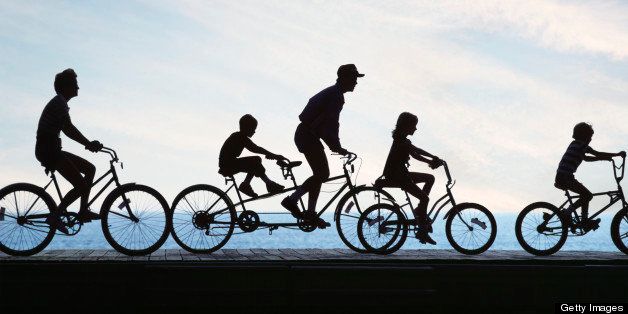
The "new majority" that elected a president is also electing to hop on the bicycle as a transportation alternative.
Biking boomed in communities across the country, doubling from 1.7 billion trips in 2001 to more than four billion trips in 2009. That growth is being pedaled forward by youth, women, and people of color -- who are playing a key role in shifting transportation demand towards safe, accessible, and equitable bicycling infrastructure.
A first of its kind report, "The New Majority: Pedaling Towards Equity," released recently by the League of American Bicyclists and the Sierra Club, features data on demographic ridership, the effect of safe cycling infrastructure on ridership, new immigrant perceptions of bicycling, as well as the economic impact of transportation and health inequity.
According to the report, the fastest growth in bicycling over the last decade is among the Hispanic, African-American and Asian-American populations, which grew from 16 percent of all bike trips in 2001 to 23 percent in 2009.
According to a national poll, more than 85 percent of people of color (African American, Hispanic, Asian, Native American and mixed race) have a positive view of bicyclists and 71 percent say their community would be a better place to live if bicycling were safer and more comfortable.
That support is true among the next generation, as well: 89 percent of young adults -- aged 18-29 -- have a positive view of bicycling and 75 percent agree that their community would be a better place to live if biking and walking were safer and more comfortable.
These new riders, leaders and organizations are making biking accessible and inviting to all Americans, while making the case for a safer and more equitable transportation system in communities nationwide.
Not surprisingly, the interest and demand among many Americans appears to be thwarted by a lack of equitable distribution of bicycle facilities and culturally competent outreach. For instance, according to the report, 60 percent of people of color say they would ride more if they had access to bike lanes or trails. Better access to safe cycling infrastructure, including protected cycle tracks, bike lanes, bike sharing systems, and bike parking, can help more people take advantage of the significant health, economic, environmental, and community benefits of bicycling.
"The New Majority: Pedaling Towards Equity" uncovers stories and data that point to consistent disparities and inequities in the manner in which people of color, women and youth -- including groups that are bicycling at higher rates and have more to gain in terms of bike benefits -- are engaged in bicycling-related matters. For example, data gathered by the Los Angeles County Bicycle Coalition revealed that neighborhoods with the highest percentage of people of color had a lower distribution of cycling facilities -- and areas with the lowest median household income ($22,656 annually) were also the areas with the highest number of bicycle and pedestrian crashes.
The report also underlines stories of powerful local efforts of communities organizing to address these issues, opening up new lanes to cycling in communities often overlooked by traditional transportation planners and cycling advocates.
The U.S. Department of Transportation, local and state transportation planners, and advocates at all levels have a responsibility to ensure that our transportation is safe, accessible, and equitable for everyone. This report shows that the future of transportation is changing, and in many ways is already here.
The challenge: Level the playing field by truly uniting the bicycle movement. The opportunity: A rapid rise in the number of bicyclists -- and better health, safety and economic benefits for all.
Co-authored by Hamzat Sani, Equity and Outreach Fellow, League of American Bicyclists